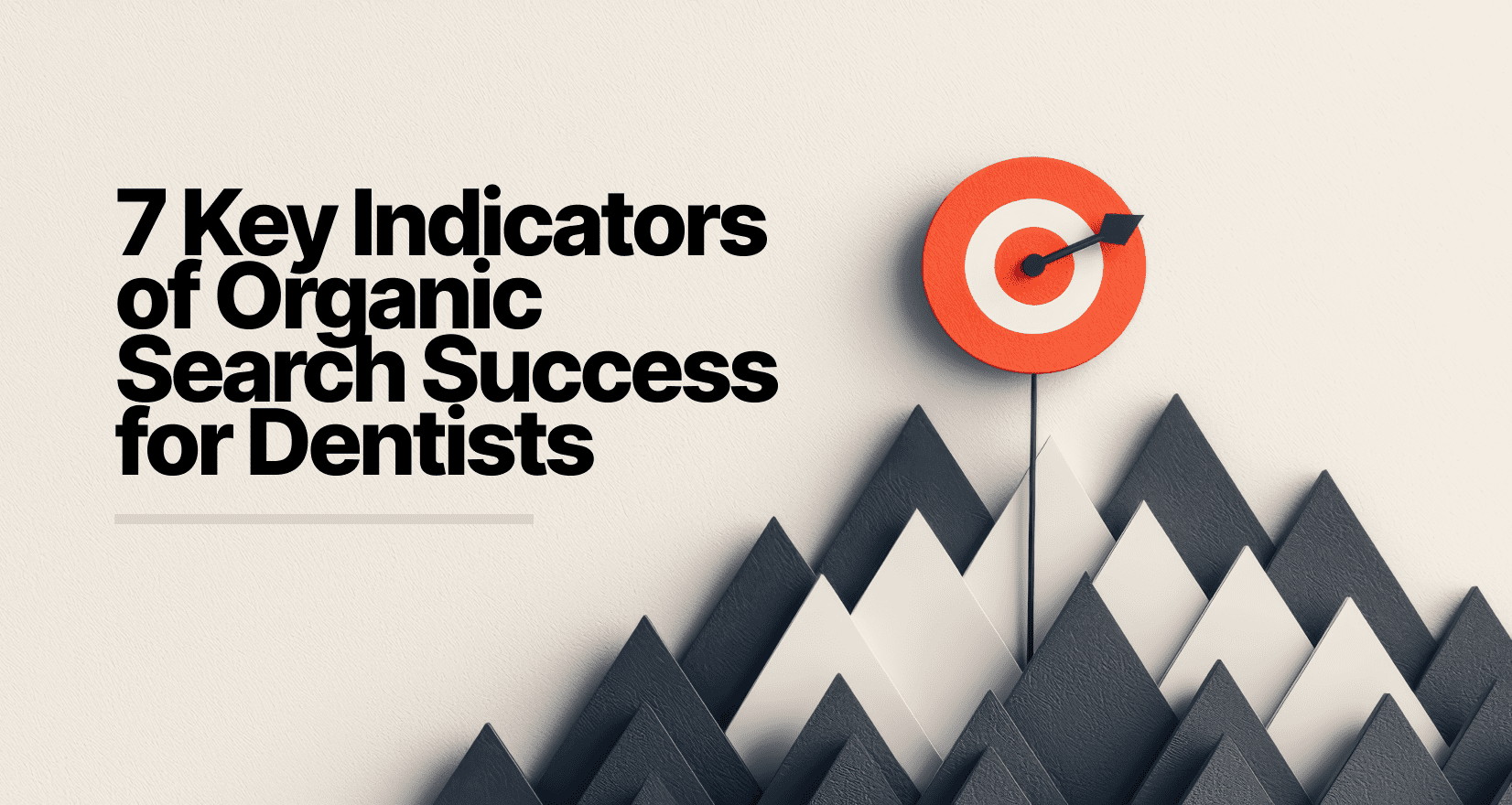AI in Dentistry: Hype, Hope, or Just a Lot of Flashy Buttons?
The dental world is at a bit of a crossroads, and not the peaceful, scenic kind where you stop to enjoy the view. It’s more like, “Are you sure I really need an AI that can schedule my patient’s crown prep and my dog’s grooming appointment?” Yeah… it’s a little chaotic out there.
AI tools are popping up faster than suspect whitening kits on Instagram, and while many of them promise to revolutionize dentistry, a lot of practices are left wondering: is this the future of oral healthcare or just another shiny tech toy and a money-suck?
To sort it all out, Byte Sized Podcast host Adrian Lefler called in some backup in the form of Ann-Marie DePalma, a dental hygienist turned software trainer turned AI expert. She’s kind of like the AI-savvy fairy godmother dental hygienists never knew they needed (minus the wand, plus the clinical expertise).
With her no-nonsense background in both hygiene and tech, Ann-Marie helped peel back the layers of AI hype to reveal where it’s actually making a difference, especially in hygiene, the unsung hero of dental ops.
The Time Crisis in Dental Hygiene
Before diving into AI solutions, Ann-Marie identified a problem that many practice owners overlook: the comprehensive periodontal evaluation simply isn’t happening in most practices. Despite having the skills to check for bleeding, probing depths, furcation involvement, mobility, and all the other glamorous signs of gum disease, most hygienists end up doing the basics. Not because they forgot or they’re lazy, but because there’s barely enough time in the day to breathe, let alone document every square millimeter of a patient’s mouth.
“I only have anywhere from 45 minutes to an hour to do a million and one things,” Ann-Marie explained. “And that keeps increasing over time.”
This time crunch creates a cascading problem. Without comprehensive evaluations, patients never understand what’s happening in their mouths. They think they’re getting “just a cleaning” like they’re rolling through an oral carwash, rather than receiving specialized healthcare from trained professionals. This lack of understanding means patients don’t value the service, which impacts both practice profitability and patient retention.
Ann-Marie made a good point here. Patients know their weight, blood pressure, and cholesterol levels, but when they visit the hygienist, they only worry about recession… and that’s about all they know.
The solution isn’t working faster or cutting corners. Here’s the part where dental AI actually earns its seat at the table. The solution isn’t asking hygienists to move at warp speed or cut corners, it’s giving them smarter tools to offload the boring, time-sucking tasks like documentation and tracking.
In other words: less typing, more diagnosing.
Voice-Activated AI Periodontal Charting and the Business Case
Let’s talk about the part of hygiene that everyone dreads but no one can avoid: documentation. It’s that magical time when hygienists need three hands, a second person, or the motor skills of a concert pianist to juggle sharp instruments and enter data without dropping anything.
Products like Bola.ai and Denti.ai offer voice-activated periodontal charting that integrates directly with practice management systems. Instead of requiring a second person to record measurements or forcing hygienists to awkwardly use their feet to input data, these dental AI tools listen to the hygienist calling out measurements and automatically populate the patient chart.
Modern AI charting tools work through integrations that allow different software systems to communicate seamlessly. They integrate directly with your practice management software via API (aka: software whispering sweet nothings to each other in the background), recording data in real-time as the hygienist speaks it aloud.
But the real benefit isn’t just efficiency. It’s the time that’s freed up for education. When hygienists reclaim even five or ten minutes per appointment from administrative tasks, they can use that time to actually explain what they’re measuring, why it matters, and how it connects to overall health. That education transforms “just a cleaning” into a valued healthcare service.
Practices often obsess over new patient acquisition while ignoring retention. Comprehensive periodontal evaluations, properly explained, establish the practice as an authority. They create opportunities to diagnose and treat conditions that patients didn’t know they had. AI tools that save time and improve documentation make these outcomes possible at scale.
![[Byte Sized Podcast Ep. 14] How AI is Solving Dental Hygiene's Biggest Workflow Problems Feat. Ann-Marie DePalma - dental hygiene,hygienist - My Social Practice - Social Media Marketing for Dental & Dental Specialty Practices AI in dentistry, dental hygiene](https://mysocialpractice.com/wp-content/uploads/2025/09/1-x-1-–-social-post–14-500x500.png)
The Coming Consolidation and Critical Security Questions
Right now, practices can choose from separate AI products for periodontal charting, insurance verification, diagnostic imaging analysis, phone answering, and more. Each tool typically requires its own integration with the practice management system, and each integration costs money. These are the kinds of communication problems that fuel sitcom-level misunderstandings.
Adrian explained the issue: “Each one of these separate AIs, they’re all paying for fees that are duplicated. We have to pay Dentrix or Eaglesoft to get access to connect our system, but so does Denti and so does Bola. They’re all paying the same fee to get access to the same information. But who’s paying for it? Well, the doctor’s paying for it.”
The prediction: within the next two years, practices will be able to purchase comprehensive AI platforms that handle multiple functions instead of cobbling together individual point solutions. Yay!
The fun came to a screeching halt when Adrian brought up Heartland Dental’s class-action lawsuit. Boo!
Long story short: an AI phone system allegedly recorded calls without proper patient consent. Yikes.
Essential questions practices should ask every AI vendor include:
Data handling and storage: How is patient data being used? Where is it stored? Is it encrypted both at rest and in transit? Are you doing everything in the US or is data sent offshore?
Training protocols: Is the AI being trained on my practice’s data, or are you using conversations from multiple practices to train a shared model?
HIPAA compliance: Is everything HIPAA compliant? Can you provide a Business Associate Agreement?
Transparency: Will patients know they’re interacting with AI?
Ann-Marie emphasized that practices can’t assume these questions have been answered just because a company markets itself as “HIPAA compliant.” The AI landscape is evolving faster than regulations, and companies that haven’t thought through these issues in depth represent potential liability.
Starting Your AI Journey: A Practical Framework
With new AI tools launching faster than you can say “periodontal charting,” it’s understandable if you feel overwhelmed. Do you start with phone automation? Diagnostic imaging? A robot that refills the fluoride trays? (Okay, we’re not quite there yet.) Ann-Marie’s advice is refreshingly simple: start with your pain points.
“Look at what your practice needs. Where are your pain points? Is the hygiene team complaining about time? Do they need more education for their patients? Is it a practice management side? Am I short-staffed in the front and don’t have people to answer the phone?”
Adrian dubbed it the “sniper model” which is not as intimidating as it sounds. The idea is to zero in on one specific problem and find the right AI tool to fix that problem. Not everything. Just the one that’s been giving your team the biggest headache.
The Path Forward
As the conversation wrapped up, both Adrian and Ann-Marie acknowledged that AI in dentistry is still in its early stages. Think rotary phone era, not iPhone 15 Pro Max. Ann-Marie expects updates to HIPAA security rules later this year that will specifically address AI.
The ones that come out ahead won’t be the clinics collecting every AI tool like Pokémon cards. They’ll be the thoughtful teams that:
- Identify real problems
- Ask the hard questions
- Get their team involved
- Choose tools that actually help
- And… dare we say it… read the user manual
AI isn’t here to replace hygienists (no robot can match your ability to polish a molar while delivering life advice).
AI won’t fix every problem in dentistry. But thoughtfully implemented, it can solve specific, significant challenges that have constrained practice growth and patient care for years. For practices willing to go beyond the hype and think strategically, the upside is massive.
In This Episode:
Ann-Marie DePalma, CDA, RDH, MEd
Ann-Marie DePalma, CDA, RDH, MEd has developed programs to provide practices and individuals with the tools to be productive, profitable and patient centered. Over her career as a hygienist, educator and consultant, Ann-Marie has empowered groups and individuals to be the best they can be.
Adrian Lefler, CEO and Co-founder of My Social Practice
Adrian Lefler, CEO of My Social Practice, is a seasoned expert in the dental marketing industry with 14 years of experience. He is widely recognized for his engaging and informative presentations. Based in Suncrest, Utah, Adrian shares his life with his wife, four children, and a lively mix of pets. My Social Practice is a leading dental marketing company, and Adrian is passionate about helping dental professionals succeed in this dynamic field.
Frequently Asked Questions
How does voice-activated AI periodontal charting actually work in a dental practice?
Voice-activated AI periodontal charting tools like Bola.ai and Denti.ai use natural language processing to listen to hygienists verbally calling out measurements during patient examinations. The AI interprets these spoken numbers and automatically populates the appropriate fields in the practice management system through API integrations. This eliminates the need for a second person to manually record data or for the hygienist to awkwardly input information while examining the patient. The technology typically requires minimal training, as it’s designed to understand standard clinical terminology and numbering systems used in periodontal evaluations. Most modern solutions integrate directly with major practice management platforms like Dentrix, Eaglesoft, and Open Dental, ensuring the data flows seamlessly into patient records without requiring separate software or manual data transfer.
What are the most important cybersecurity questions to ask AI vendors before implementation?
When evaluating AI vendors for your dental practice, you should ask comprehensive questions about data handling and security. Start with data storage: where is patient information stored, is it encrypted both at rest and in transit, and is data processing done entirely in the United States or sent offshore? Request information about their HIPAA compliance protocols and ask for a Business Associate Agreement. Understand how the AI is trained—specifically, ask whether your practice’s patient conversations or data are being used to train AI models that will be used by other practices, as this raises both privacy and compliance concerns. Inquire about their security audit history and whether they’ve experienced any data breaches. Finally, ask how the AI discloses itself to patients—are patients aware they’re interacting with artificial intelligence, and how is that notification handled? These questions help you identify vendors who have thoughtfully addressed security and compliance issues versus those who may expose your practice to liability.
Can AI tools help hygienists identify systemic health conditions during patient appointments?
While AI tools in dentistry primarily focus on operational efficiency and diagnostic assistance, they indirectly enable hygienists to better identify systemic health connections by freeing up appointment time for thorough evaluations and patient conversations. When hygienists aren’t rushed through documentation tasks, they can observe and discuss oral manifestations of conditions like rheumatoid arthritis, polymyalgia rheumatica, hormonal disorders, and other systemic diseases that present symptoms in the mouth. Some emerging AI diagnostic tools can assist with pattern recognition in imaging that might indicate systemic conditions, but the hygienist’s clinical expertise and patient relationship remain irreplaceable. The key benefit of AI in this context is creating the time and mental space for hygienists to exercise their clinical judgment, ask probing questions about patients’ overall health, and recognize concerning patterns that warrant further investigation or referral. This represents an elevation of the hygienist’s role from task-focused cleaning to comprehensive healthcare provider who connects oral health to systemic wellness.

![[Byte Sized Podcast Ep. 22] 100% of Dental Practices Will Be Targeted – Here's What Hackers Don't Want You To Know - dental hygiene,hygienist - My Social Practice - Social Media Marketing for Dental & Dental Specialty Practices hackers and dental practices](https://mysocialpractice.com/wp-content/uploads/2025/12/byte-sized_ep22.png)

![[Byte Sized Podcast Ep. 14] How AI is Solving Dental Hygiene's Biggest Workflow Problems Feat. Ann-Marie DePalma - dental hygiene,hygienist - My Social Practice - Social Media Marketing for Dental & Dental Specialty Practices New call-to-action](https://no-cache.hubspot.com/cta/default/1942633/46e5c50e-9172-4068-8104-55f887411530.png)
![[Byte Sized Podcast Ep. 14] How AI is Solving Dental Hygiene's Biggest Workflow Problems Feat. Ann-Marie DePalma - dental hygiene,hygienist - My Social Practice - Social Media Marketing for Dental & Dental Specialty Practices New call-to-action](https://no-cache.hubspot.com/cta/default/1942633/87651106-90bf-4f04-88ab-5c7eb7283f55.png)
![[Byte Sized Podcast Ep. 14] How AI is Solving Dental Hygiene's Biggest Workflow Problems Feat. Ann-Marie DePalma - dental hygiene,hygienist - My Social Practice - Social Media Marketing for Dental & Dental Specialty Practices My Social Practice - Social Media Marketing for Dental & Dental Specialty Practices - dental hygiene,hygienist](https://mysocialpractice.com/wp-content/uploads/2025/04/exploring-ai_ann-marie.png)
![[Byte Sized Podcast Ep. 14] How AI is Solving Dental Hygiene's Biggest Workflow Problems Feat. Ann-Marie DePalma - dental hygiene,hygienist - My Social Practice - Social Media Marketing for Dental & Dental Specialty Practices Dental AI Tools with Adrian Lefler](https://mysocialpractice.com/wp-content/uploads/2024/07/Head-Shot_Adrian_Circle_Large-e1721666265743.png)

![[Byte Sized Podcast Ep. 22] 100% of Dental Practices Will Be Targeted – Here's What Hackers Don't Want You To Know - dental hygiene,hygienist - My Social Practice - Social Media Marketing for Dental & Dental Specialty Practices hackers and dental practices](https://mysocialpractice.com/wp-content/uploads/2025/12/byte-sized_ep22-100x100.png)


